Best Shinai Bamboo Swords for Kendo
NO AI USED This Article has been written and edited by our team with no help of the AI
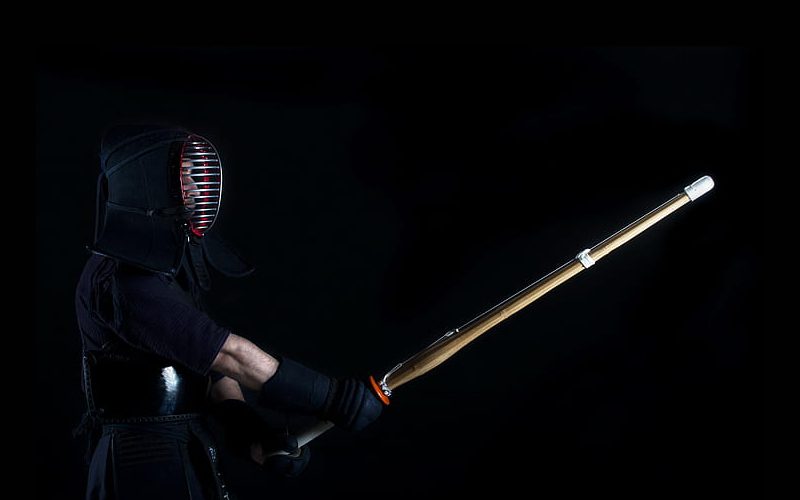
A shinai is a flexible bamboo sword used in kendo training and competitions. It consists of a bundle of bamboo strips bounded together and equipped with a hand guard. Its durability makes it a practical and efficient weapon for full-contact sparring. Kendo practitioners handle their shinai with respect as it represents the Japanese sword.
We’ve compiled a guide on choosing the best shinai for kendo practice and where you can get it online.
How to Choose the Best Shinai for Training
The durability of the shinai depends on the material it is made of. Its size and weight also vary according to the practitioner’s preferences.
Here are the factors to consider when choosing a bamboo sword:
Type of Material
Native to several South Asian countries, bamboo is the primary material for the shinai, though there are several bamboo species. In Japan, the madake variety is the most preferred for training weapons due to its thickness, flexibility, and hardness. Today, a kendo shinai can be made from natural bamboo or synthetic carbon.
Natural Bamboo Shinai
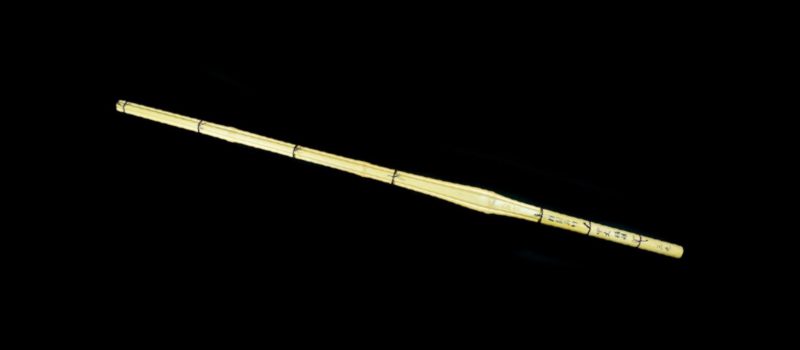
When choosing a shinai, dark stains and clear, noticeable grains are indications of stronger bamboo. A slightly reddish color is also preferable over the lighter one. However, examine the shinai for tiny holes or powder spills when swung, which indicate worm infestation. Generally, natural bamboo is weaker than synthetic carbon, though it can last longer with proper care.
Synthetic Carbon Shinai
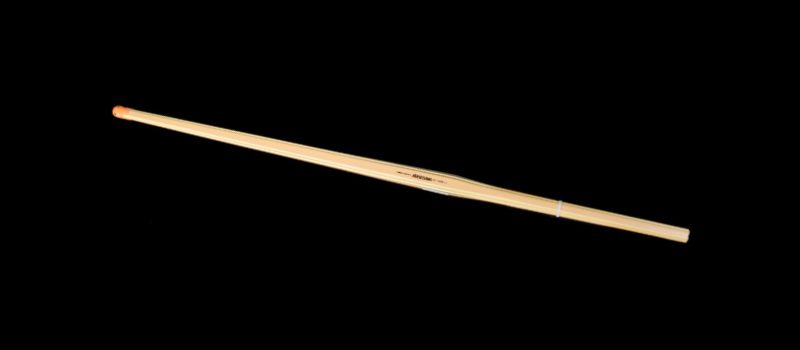
The synthetic carbon shinai is the most durable and lasts the longest. Unfortunately, its hardness and weight cause more discomfort upon impact. It is suitable for beginners but not for young children. However, almost all high-ranking kendo practitioners prefer the feel of bamboo, and many dojos and places of kendo practice in Japan banned this type of shinai.
Shinai Appearance
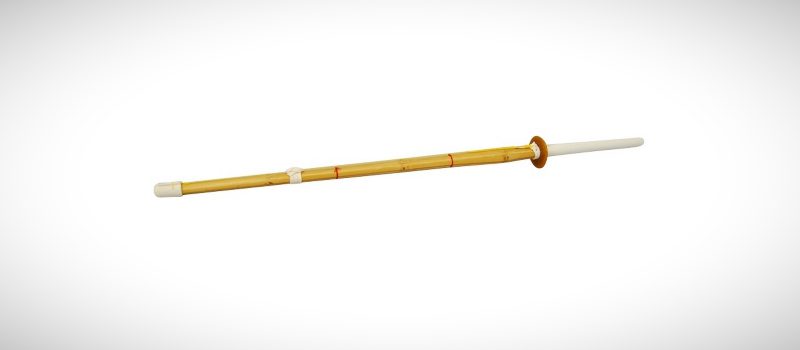
The shinai consists of a hilt or tsuka, hand guard or tsuba, and four pieces of bamboo tightly bound with strings. The shinai comes in three different shapes, determined by the do area, the first knot above the tsuba. The dobari shinai is the thickest, making it efficient in sliding up technique or suriage waza. The chubuto shinai is the medium type, while the hosomi shinai is the thinnest.
Size and Length
The length of the shinai varies and depends on individual preferences. An ideal size is from the ground to about the height of the chest of a practitioner. The Zen Nihon Kendo Renmei also sets a standard range on its minimum and maximum size.
In the Itto-ryu kendo school that uses a single sword, the shinai is about 120 centimeters or longer for adults. For children, the bamboo sword is usually about 114 centimeters or longer, and for those in high school, about 117 centimeters or more.
In Nito-ryu, a style of kendo that utilizes both long and short swords, a daito or long sword has an overall length of 114 centimeters or more while a shoto or short sword is about 62 centimeters or longer.
Weight
An ideal weight for the training weapon varies, but a practitioner should be able to swing it freely without strain. In Itto-ryu kendo, the shinai typically weighs more than 440 grams for women and 510 grams for men without the tsuba.
In Nito-ryu kendo, a long sword usually weighs more than 400 grams for women and 440 grams for men. On the other hand, a short sword ranges from 250 to 280 grams for women and 280 to 300 grams for men.
Shinai Construction
A good bamboo sword has good flexibility and resilience and is quick to bounce back when you bend its tip. Also, well-balanced bamboo pieces are of equal thickness and will not slide when you press them with your fingers. The tsuka or hilt is covered by a handle sheath called tsukagawa, often made of leather. It also features a tsuba or sword guard, usually made of leather or plastic.

The shinai has a leather cap called sakigawa, which keeps all four pieces of bamboo tightly bound at the sword tip. Its striking zone is called monouchi, between the sword tip and the nakayui or middle strap. When choosing a training sword, the sakigawa should not be too thick. The nakayui should also be tight and placed correctly. Instead of a scabbard or saya, it is kept in a shinai sack called shinaibukuro.
Best Shinai and Alternative Training Swords Online
Kendo practitioners use shinai for contact drills, but they also utilize the bokken or wooden swords in practicing prearranged forms or kata. To help you find the perfect practice sword, we rounded up the best shinai and alternatives you can get online.
1. Kendo Shinai
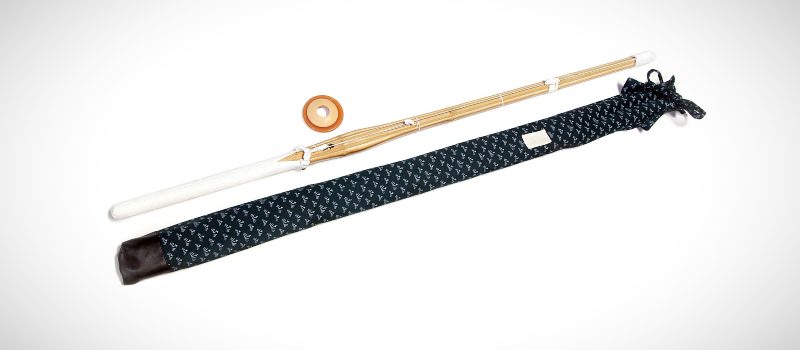
Equipped with a tsuba or hand guard, this kendo shinai is ideal for training and contact drills. It has an approximate length of about 119 centimeters, suitable for Itto-ryu and Nito-ryu kendo. It also weighs about 520 grams, making it a practice sword for men in Itto-ryu.
This kendo shinai can also serve as a cosplay prop. Several anime and manga series are kendo-themed, and the characters wield the bamboo sword. This shinai will let you play one of the characters in Musashi no Ken, Shippu Doto, and Bamboo Blade.
2. Katana Bokken

Are you looking for a practice sword for kata? Constructed from high-quality polypropylene, this katana bokken is ideal for training, not only in kendo, but also in other martial arts like aikido and iaido. It has an overall length of 105 centimeters and a blade length of 76 centimeters, the average size of a katana sword.
This katana bokken also features a textured grip, replicating the traditional hilt wrapping on samurai swords. For a budget of less than $30, you’ll have an all-around weapon you can use in kendo practice, other martial arts training, and cosplay.
3. Wooden Musashi Bokken
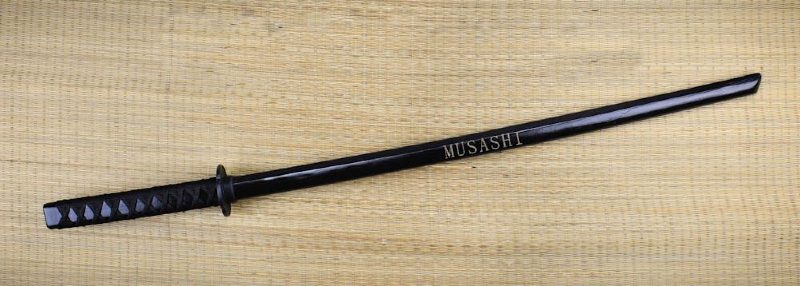
Inspired by the famous Miyamoto Musashi, this wooden bokken will unleash your inner warrior. It is constructed from durable wood, though it is not of Japanese oak. It features a tsuba to protect the hand and a rubber habaki to hold it in place. It measures about 101 centimeters, with its blade about 78 centimeters long. It can be a good choice for beginners who want to practice their sword techniques, but it may not be suited for heavy sparring.
Care and Maintenance of Shinai
Like any martial arts weapon, a shinai can pose a danger to the wielder and other practitioners and should always be inspected and maintained. With proper care, a natural bamboo shinai can last longer.
Disassemble and check the shinai periodically.
After each use, disassemble and oil the bamboo sword to prevent it from drying. Make sure that the string, nakayui or middle strap, and other components are secured. A damaged sakigawa or leather cap could expose the sword tip and endanger your opponent, so it must be replaced immediately.
Repair the splits in the shinai.
Practitioners generally use a shinai sharpener, shinai file, and walnut oil to repair damaged bamboo swords. First, disassemble the weapon, starting from the leather cap and the handle sheath. Shave off the parts that have split using a sharpener, but do it only in one direction to avoid worsening the split. After removing the splits, use a shinai file to smoothen the surface. Lastly, apply walnut oil to the surface before reassembling the bamboo sword.
A Brief History of Bamboo Swords
The term shinai sometimes translates as bamboo katana when written in kanji characters. It also comes from shinau, which means to flex. It is contrary to rigid swords, like the bokken or wooden sword and real samurai sword.
Origin of the Shinai
During the Sengoku period in Japan, samurai Kamiizumi Nobutsuna created a shinai from bamboo and named it fukuro shinai, meaning wrapped bamboo sword. It consisted of bamboo slats placed inside a leather pouch. Many believe that he used it in his match with swordsman Yagyu Muneyoshi. Today, the Yagyu Shinkage Ryu, one of the oldest schools of swordsmanship, uses the weapon in training.
Nakanishi Chuzo was the first to create the modern shinai, which consisted of finely split bamboo slats secured together with a leather cap and strings. It also featured a tsuba hand guard and a leather hilt. Its length varied, but by 1856, the Tokugawa military office prohibited using the bamboo sword if it is longer than 117 centimeters.
The Shinai in Kendo
The Japanese imperial government promoted several forms of martial arts during the invasion of Manchuria in 1931, the war in China in 1937, and World War II. The traditional Japanese swordsmanship is commonly referred to as kenjutsu. But in the mid-Tokugawa period, the terms gekken or gekiken were coined to refer to fencing that used a shinai and protective armor.
Kendo evolved from kenjutsu, an aggressive style of swordsmanship oriented toward incapacitating or killing an enemy, and developed into a sport for personal development. Modern kendo consists of practicing kata or forms with wooden swords called bokken or bokuto and full-contact sparring with shinai, which is nonlethal for training.
Conclusion
The shinai bamboo sword is a flexible weapon and a safer alternative to the bokken and real katana sword. Today, it is one of the most popular weapons in martial arts training and remains relevant in kendo-themed anime and manga.

